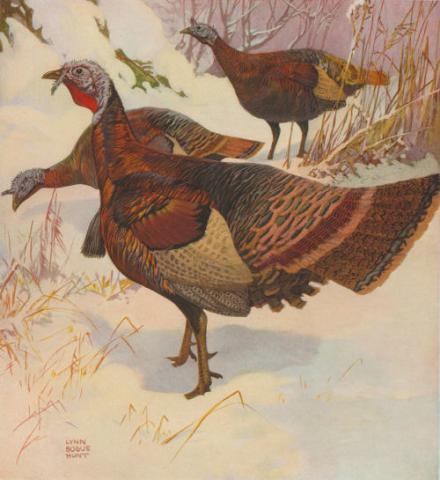
The bald eagle became America's national symbol on June 20, 1782, when the Second Continental Congress approved a design for a national seal created by Charles Thomson, the secretary of Congress, which used the bird as a motif. A previous effort to design a national seal, led by Benjamin Franklin, Thomas Jefferson and John Adams, had failed to produce a design that met with Congress's approval.
But if they had succeeded, it's unlikely that they would have selected a bald eagle. In a January 26, 1784 letter to his daughter, Franklin described the bald eagle as "a rank coward", "lazy", and a "bird of bad moral character" that steals from other birds. He much preferred the turkey, which he described as a "much more respectable bird", "a bird of courage", and "a true original native of America" that "would not hesitate to attack a Grenadier of the British Guards who should presume to invade his Farm Yard with a red Coat on."
The courageous, respectable turkeys we're sharing this #Feathursday were illustrated in 1917 for the E. I. du Pont de Nemours & Company's Our American Game Birds series. The series consisted of nineteen prints of paintings of birds by artist Lynn Bogue Hunt (1878u20131960), accompanied by descriptive text from ornithologist Edward Howe Forbush (1858-1929), and was released by DuPont's Sporting Powder Division to advertise shotgun powder.
To view more prints from this series, which is part of the Hagley Library's DuPont Company Museum collection (Accession 1968.001), you can visit this collection's page in our Digital Archives by clicking here.

